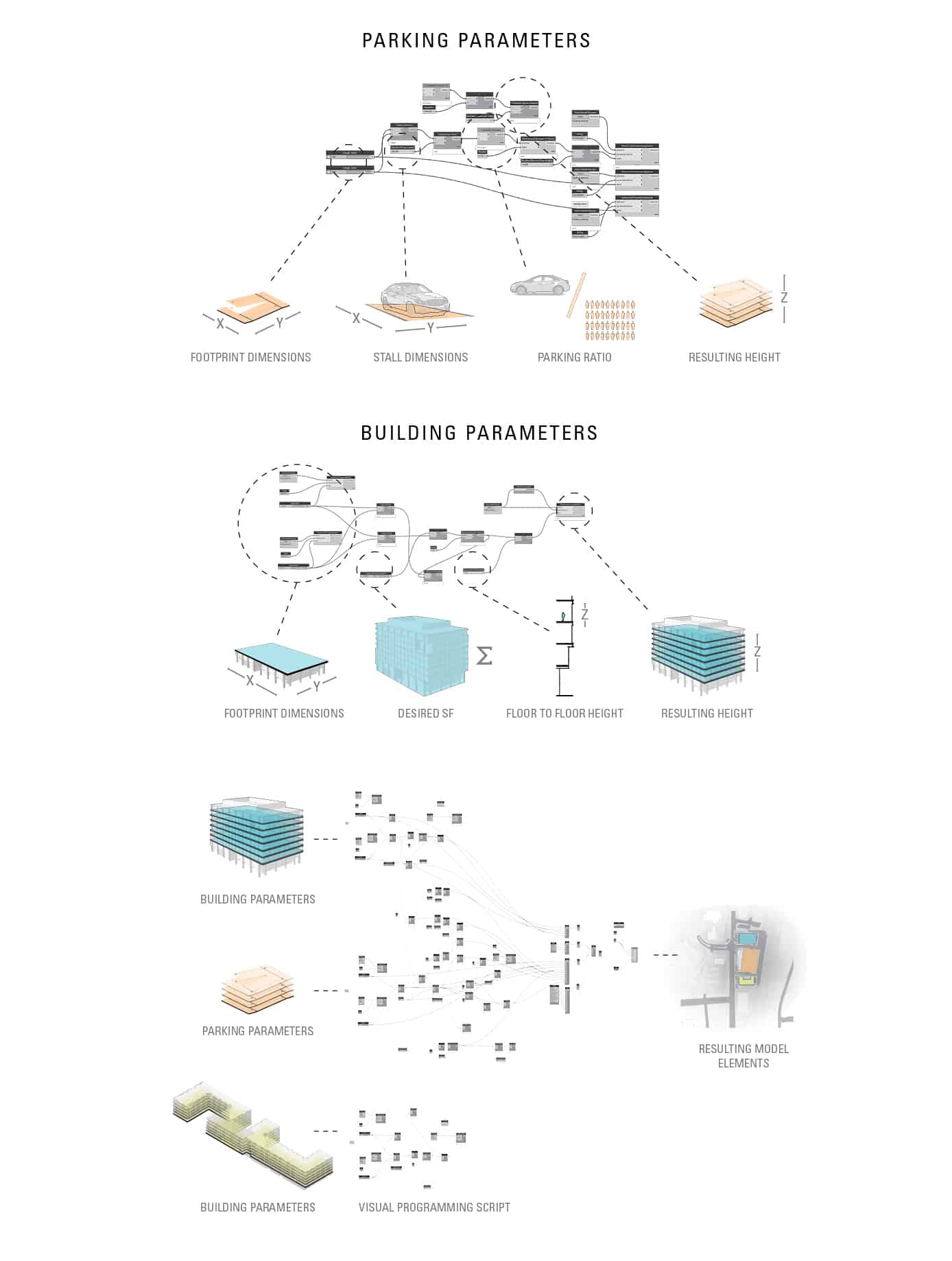As developers search for opportunities to create maximum return at minimum cost on a project, numerous studies need to be prepared to analyze the yield and suitability of the proposed site. During the early stages of any development process, over 70% of initial costs lay in design fees which are often unfinanced dollars used at the developer’s risk, challenging both the developer and the design team. The most efficient way to do this is to compare multiple site options with minimal effort through a concept called 4D – Data Driven Due Diligence.
The industry trend is clear – the most efficient way to do it is through the use of electronic tools leveraging scripting software and parametric modeling which quickly automate the tasks and uncover opportunity through multiple studies. Although some designers see their design instincts replaced by logarithmic intelligence, the iterations generated allow the architect to select the best solution quickly, utilizing their design experience as the basis for and the assignment of the parameters that generate design.

As with most due diligence efforts, the initial study starts with parking requirements, both code-prescribed and broker-promoted. Typically, hand sketched iterations on trace-overlays examine these relationships, each with their own specific constraint that must be remembered on each version, but this electronic version allows images to change with each stroke of the pen. The relationships of occupancies to zoning regulations, building code and construction practices makes for easy automation as one can program ‘scripted’ links between variables (total SF desired, garage module width, number of units) and fixed (height limits, site SF, etc.). Given the rise of Mixed-Use projects and the complexity of each proforma, this tool is an enormous benefit to both developer and architect.
Computational design, as it is called, can take design parameters and generate forms and shapes at lightning speed. It can quickly arrange unit types for apartment building planning. Codes, life safety parameters and BOMA calculations can be programmed into the software making them automatic for every plan drawn. And while it is a useful tool in analysis it can also enhance the construction document process, automating repetitive tasks, or for use in design efforts that take advantage of custom fabrication processes, optimizing construction. The 4D process enables a developer to quickly determine the precise exterior skin-to-footprint relationship to more accurately predict cost and comply with the proforma. As a space planning tool, scripts can create room layouts that immediately respond to a shifted wall, or a moved chair.
For the developer, this data driven efficiency stands to increase profitability. More precise analysis of the project’s yield and future value increases the chance that the project will continue, giving confidence to the financier and building the relationship with the design team. For the Architect, efficient workflows reduce the cost of effort by decreasing time spent and accelerating the iterative process as it presents the most opportunities for comparison.
But there are obstacles. Change is often the result of an Unknown provoking a Known to improve, and it’s hard to apply cost to Unknowns. Innovation requires change. Tackling the mindset that the architectural design process is a custom operation is formidable, as it touches on the relevance of the service in a quickly changing world. Determining the viability of a project more efficiently, and creating solutions that hit or exceed proforma targets make the architect an indispensable part of the development process. And yet, the likelihood that a developer would change is high if it results in increased profitability and returns.

View our Beyond Workplace book on Issuu here.

